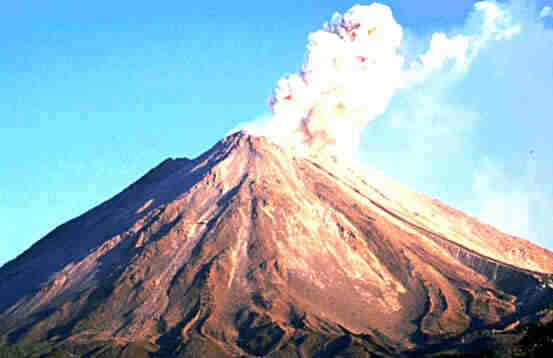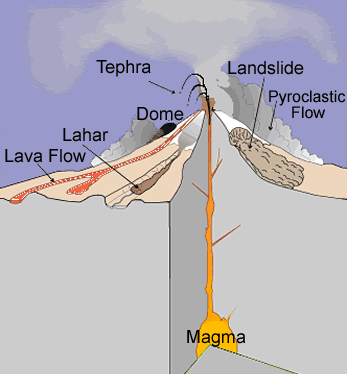|
Extrusive igneous rocks have small minerals
(fine-grained) because they cooled quickly. The minerals did not have
enough time to form larger minerals. The minerals cannot be seen without
the aid of a hand lens. Geologists use the term aphanitic to
describe this texture. The rocks can be whitish to very dark gray,
depending on what minerals formed during cooling.
Different types of volcanoes produce a variety of
rocks. Sometimes the pressure in a volcano is so great that it explodes
violently. These eruptions produce the secondary type of volcanic rock,
called pyroclastic rock (from the Greek, "pieces of
fire.") Pyroclastic rocks may contain crystals, if the molten rock
had begun to crystallize before it exploded. Pyroclastic rocks may also
contain pieces of pre-existing rock. Another type of volcanic rock is
caused by a lahar. A lahar is an Indonesian term that describes a
hot or cold mixture of water, old rock fragments, and new pyroclastic
material. It can flow down the slopes of a volcano and (or) river
valleys and create layers of a "mess."
|

Volcano, Costa Rica

Volcanic rock formation
|